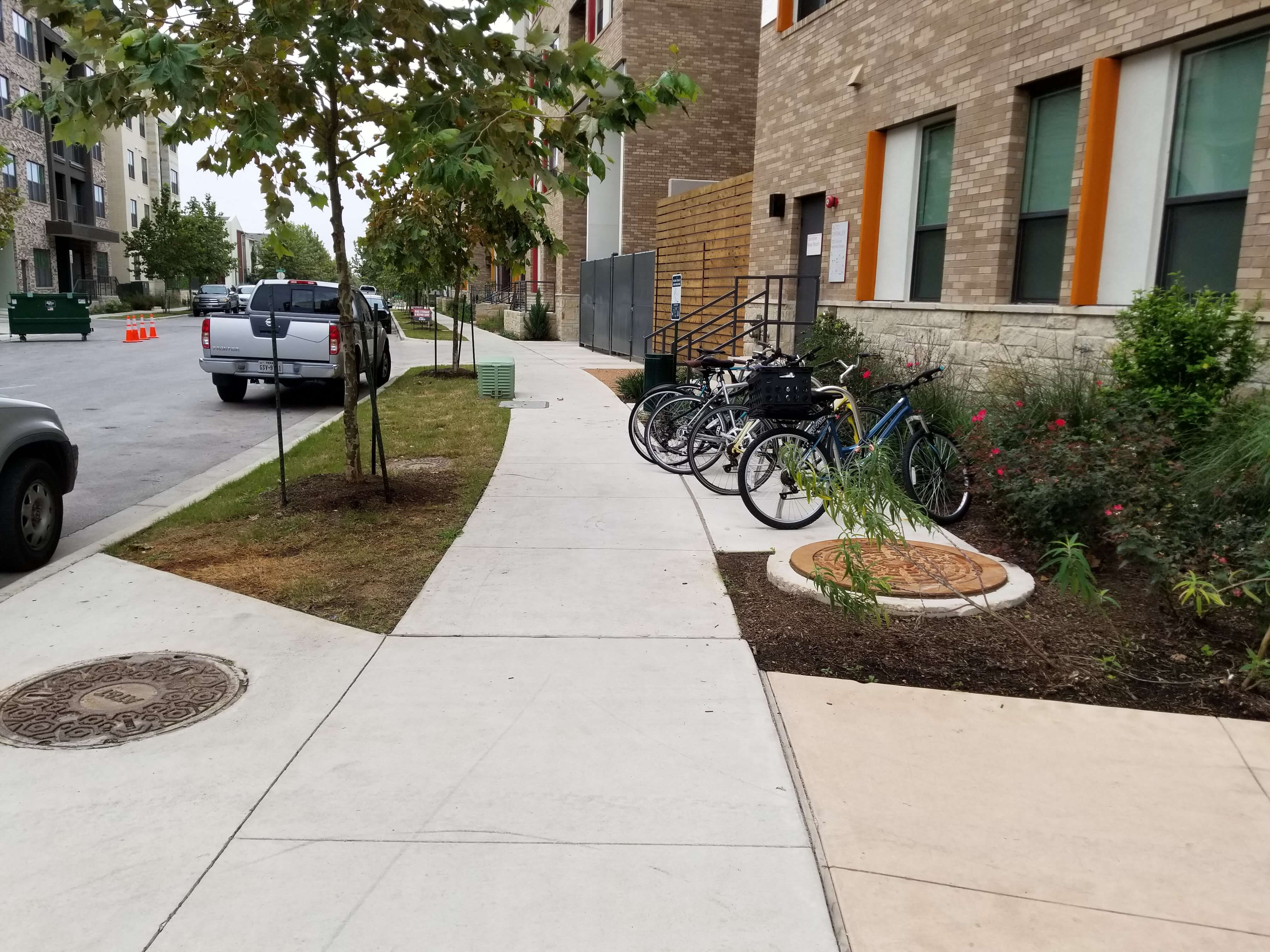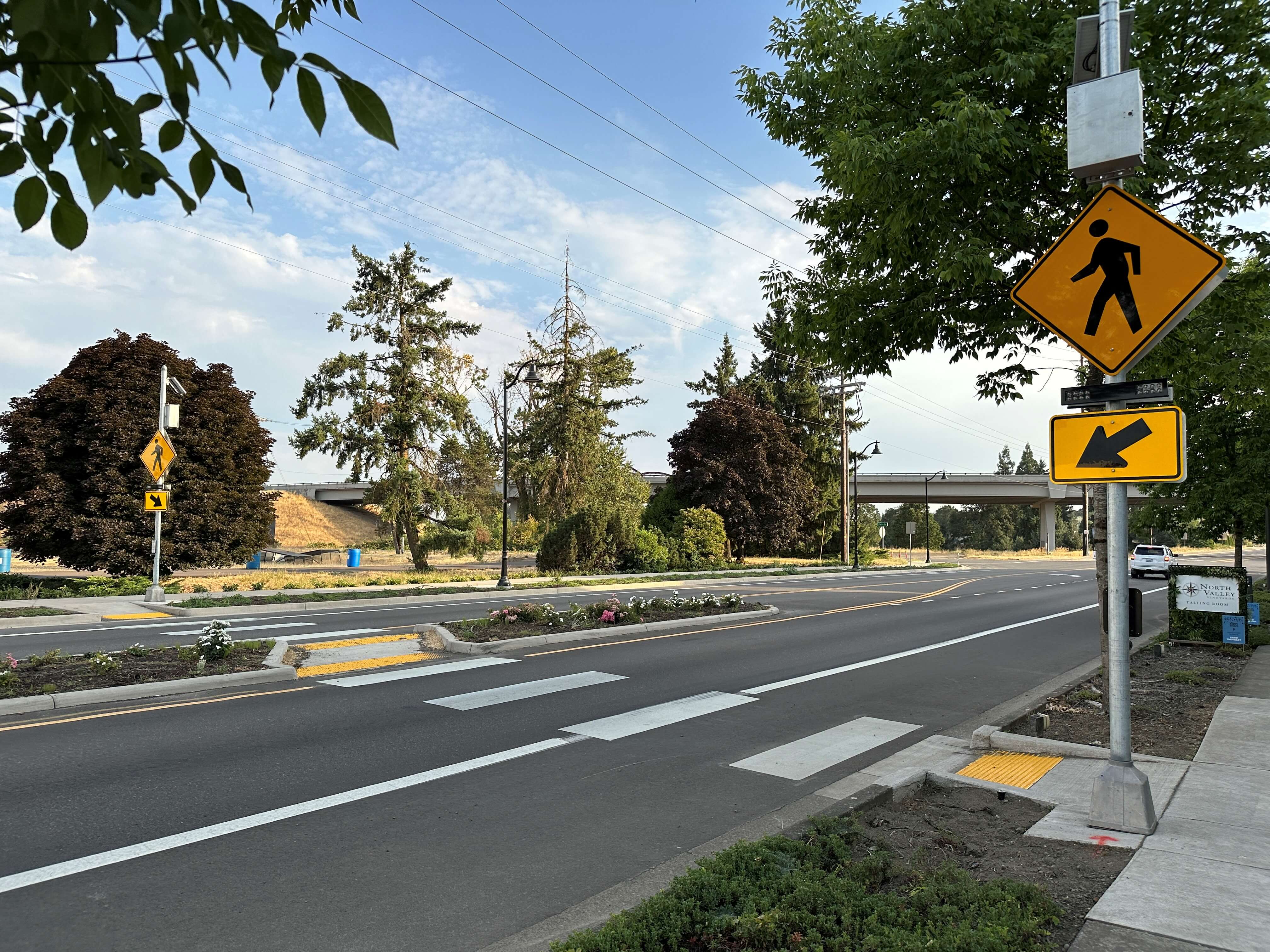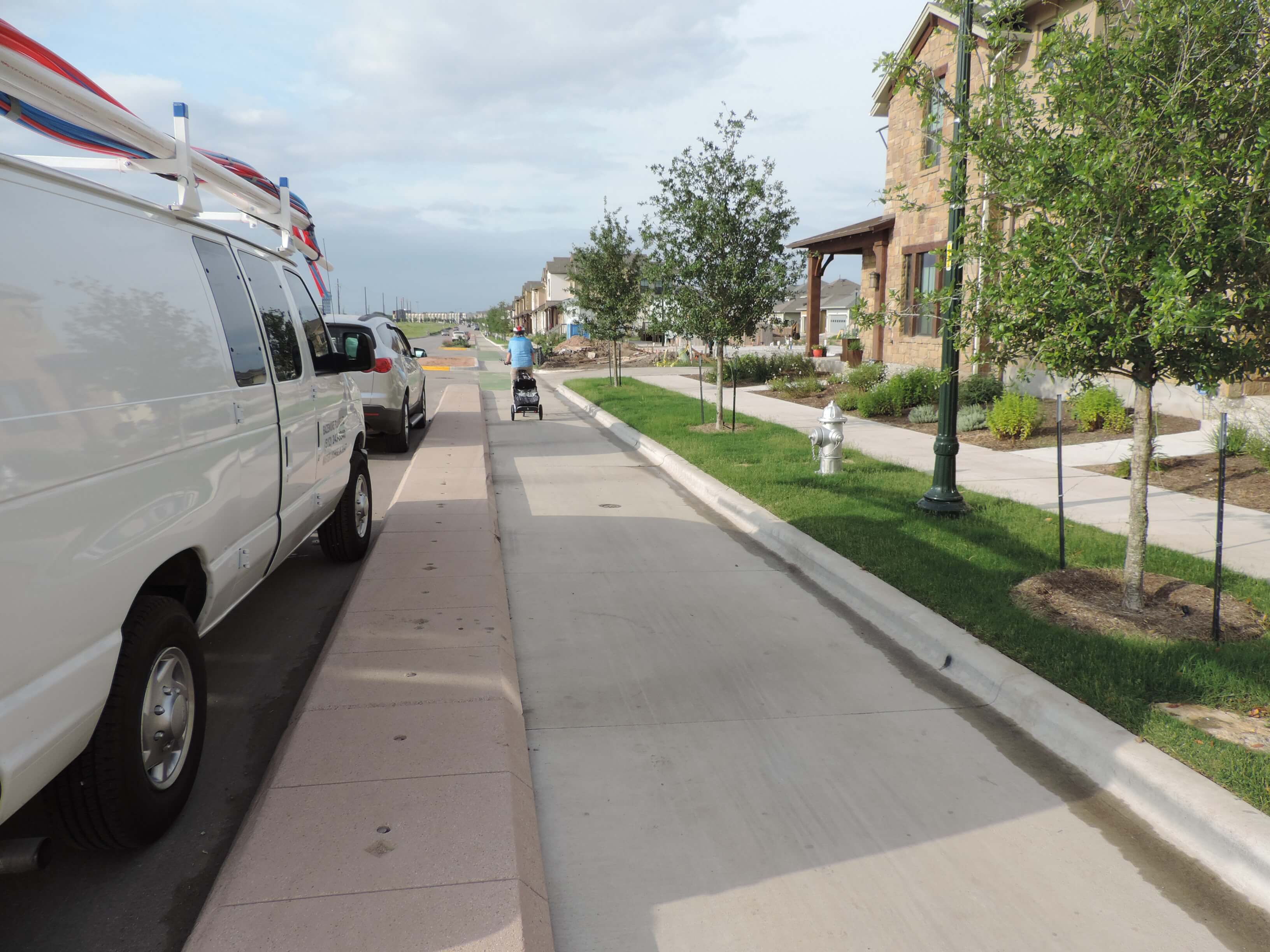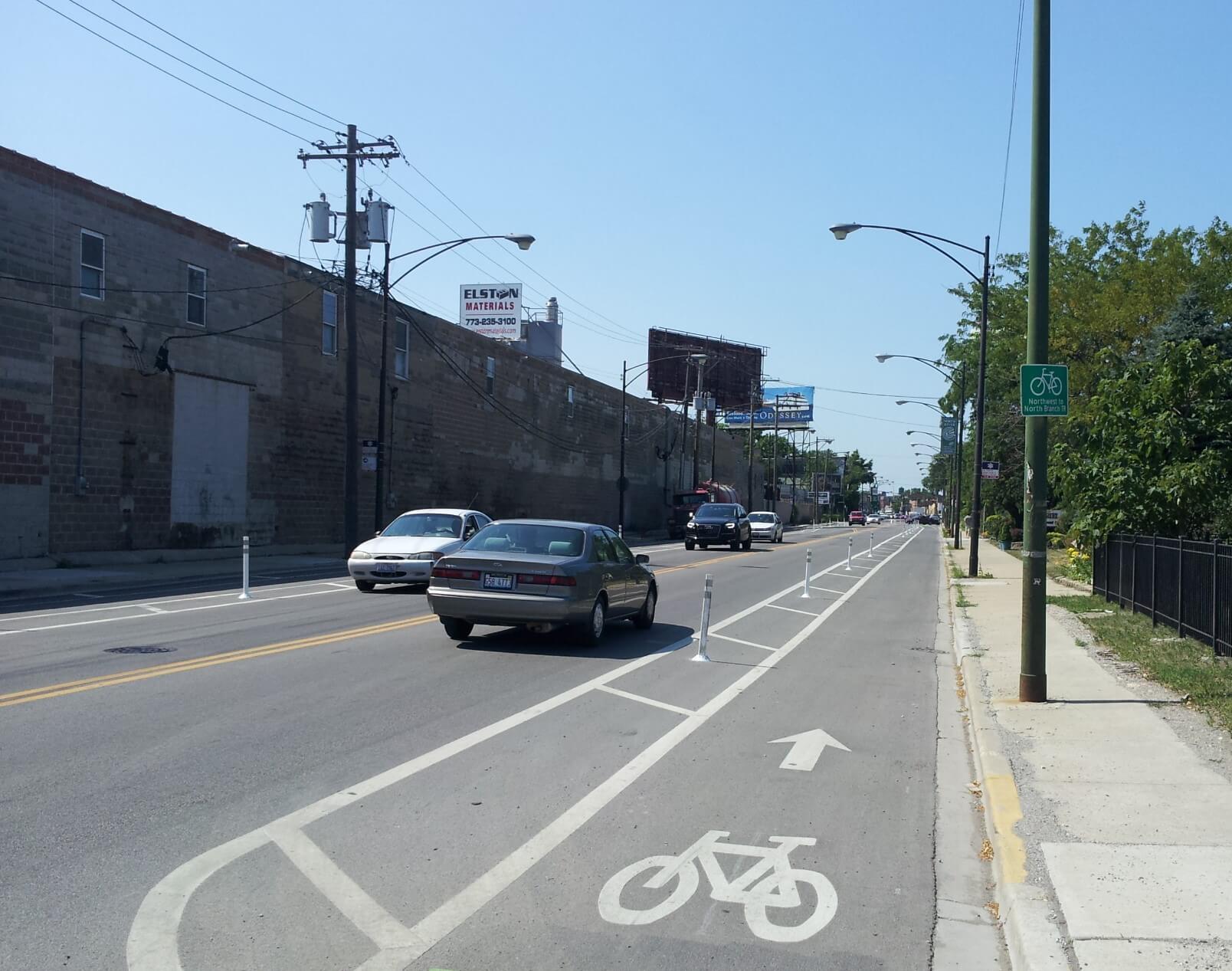Alternate Roadway Design Publications Recognized by FHWA under BIL and FAST Act
Note: Except for the statutes and regulations cited, the contents of this webpage do not have the force and effect of law and are not meant to bind the States or the public in any way. This information is intended only to provide information regarding existing requirements under the law or agency policies. The information below supersedes the FHWA memorandum, “Guidance: Bicycle and Pedestrian Facility Design Flexibility” (August 20, 2013), and the related resource, “Questions and Answers about Design Flexibility for Pedestrian and Bicycle Facilities,” last updated July 25, 2014.
The publications listed below are recognized as alternate roadway design guides (publications) under section 11129 of the Bipartisan Infrastructure Law (BIL), also known as the Infrastructure Investment and Jobs Act (IIJA, Public Law 117-58), and section 1404(b) of the Fixing America’s Surface Transportation Act (FAST Act, Public Law 114-94). These references can help transportation agencies plan, develop, and operate equitable streets and networks that prioritize safety, comfort, and connectivity to destinations for all people who use the street network. See additional Federal Highway Administration (FHWA) guidance on developing Complete Streets.
The FHWA supports the use of a Complete Streets design model, which prioritizes safety, comfort, and connectivity for all users of the roadway, including but not limited to pedestrians, bicyclists, motorists, and transit riders of all ages and abilities. In general, this includes careful consideration of measures to set and design for appropriate speeds; separation of various users in time and space; improvement of connectivity and access for pedestrians, bicyclists, and transit riders; consideration of pedestrian access routes for people with disabilities; and addressing safety issues through implementation of safety countermeasures.
The recognition of, or reference to, a roadway design guide by FHWA does not mean that all designs included in the document are compliant with Federal laws and regulations, such as the Americans with Disabilities Act (ADA) or the Manual on Uniform Traffic Control Devices for Streets and Highways (MUTCD). For example, some treatments may require that the procedures for Interim Approval or Request to Experiment set forth in the MUTCD be followed. Implementing jurisdictions are responsible for ensuring compliance with State and Federal laws and regulations.
The following publications are recognized by FHWA as potential alternate roadway design guides and may be used by a local jurisdiction meeting the requirements of 23 U.S.C. 109(o)(B) for non-NHS projects or section 1404(b) of the FAST Act for NHS projects. See memo Design Standards, FAST Act and Infrastructure Investment and Jobs Act Provisions Memo (11/16/2023) for more information.
Global Designing Cities Initiative (GDCI) Global Street Design Guide, 2016 and the Designing Streets for Kids supplement, 2020 - Inspired by the work in 70 cities in 40 countries on six continents, this guide reflects designs that save lives, prioritize people and transit, reflect diverse communities, and better serve everyone on the street.
Institute of Transportation Engineers (ITE) Designing Walkable Urban Thoroughfares: A Context Sensitive Approach, 2010 and the supplemental Implementing Context Sensitive Design Handbook, 2017 – focuses on thoroughfare design in “walkable communities,” which are compact, pedestrian-scaled villages, neighborhoods, town centers, urban centers, urban cores and other areas where walking, bicycling, and transit are encouraged. It describes the relationship, compatibility, and tradeoffs that may be appropriate when balancing the needs of all users, adjoining land uses, the natural and human environment, and community interests when making decisions in the project development process. The 2017 supplement includes an expanded focus on topic areas such as freight accommodations, speed management, and context sensitive design in lower density urban and built-up suburban environments.
NACTO Urban Street Design Guide, 2013 - highlights street design strategies that prioritize safe driving and transit, biking, walking, and public activity. The guide offers direction for cities seeking to improve street design to create more inclusive, multimodal urban environments.
The following external publications may be useful references for entities wishing to follow a complete streets design model as they plan, develop, and operate equitable streets and networks that prioritize safety, comfort, and connectivity to destinations for all people who use the street network. These guides focus on a particular mode, and while they are not comprehensive roadway design guides, they can be used in conjunction with other roadway design guides to inform multimodal solutions.
Designing for Pedestrians
-
AASHTO Guide for the Planning, Design, and Operation of Pedestrian Facilities, 2021 – provides guidelines for the planning, design, operation, and maintenance of pedestrian facilities along and across streets and highways. The guide recommends methods for accommodating pedestrians, which vary among roadway and facility types, and addresses the effects of land use planning and site design on pedestrian mobility.
Designing for Bicyclists
AASHTO Guide for the Development of Bicycle Facilities, 2012 – provides detailed planning and design guidelines on how to accommodate bicycle travel and operation in many riding environments. It covers the planning, design, operation, maintenance, and safety of on-road facilities, shared use paths, and parking facilities. Flexibility is provided through ranges in design values to encourage facilities that are sensitive to local context and incorporate the needs of bicyclists, pedestrians, and motorists.
NACTO Urban Bikeway Design Guide, 2014 – provides options that can help create "complete streets" that better accommodate bicyclists. It provides guidance for cities seeking to improve bicycle transportation in places where competing demands for the use of the right-of-way present unique challenges.
NACTO Don't Give Up at the Intersection, 2019 - can be used in concert with the NACTO Urban Bikeway Design Guide, to develop intersection design treatments that reduce vehicle-bike and vehicle-pedestrian conflicts.
NACTO Designing for All Ages & Abilities, 2014 - builds on NACTO’s Urban Bikeway Design Guide and establishes All Ages & Abilities criteria for selecting and implementing bike facilities that will attract wide ridership.
Designing for Transit
AASHTO Guide for Geometric Design of Transit Facilities on Highways and Streets, 2014 – provides information on the geometric design of transit facilities on streets and highways, including local buses, express buses, and bus rapid transit operating in mixed traffic, bus lanes, and high-occupancy vehicle lanes, as well as bus-only roads within street and freeway environments. It also covers streetcars and light rail transit running in mixed traffic and transit lanes, and within medians along arterial roadways.
NACTO Transit Street Design Guide, 2016 – provides design guidance for the development of transit facilities on city streets, and for the design and engineering of city streets to prioritize transit, improve transit service quality, and support other goals related to transit.
See other FHWA publications supporting the development of bicycle and pedestrian networks on FHWA’s Bicycle and Pedestrian Program Publications and Pedestrian and Bicycle Safety Tools.





